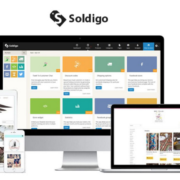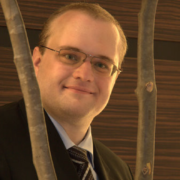StartupYard will be at Startup Safary Budapest: April 20-21
/in Starting a Business, Startup Tools, StartupYard News/by StartupYardWe’re pleased to announce that StartupYard will take part in Startup Safary Budapest, April 20th and 21st, 2017.
What is Startup Safary?
Budapest turns into a startup exhibition for 2 days
StartupYard Events
From Genius Idea to a Global Business: creating AI startups from Scratch
20/04/2017 17:30 – 18:00 – thehub.hu, 1061 Budapest, Paulay Ede utca 65.
21/04/2017 TBA Mosaik, 1136 Budapest, Pannónia utca 32.
StartupYard helps technically sophisticated developers and makers turn their ideas into real, growing businesses. In recent years, we have helped launch a series of high tech startups including TeskaLabs, Neuron Soundware, Cryptelo, and Rossum.ai. Find out how these startups went from a brilliant idea, to companies serving clients all over the world with cutting edge technologies.
Office Hours with StartupYard
20.04.2017: 13:00 – 16:00 – thehub.hu, 1061 Budapest, Paulay Ede utca 65
21.04.2017: TBA – Mosaik, 1136 Budapest, Pannónia utca 32.
This is your chance to meet the management team of Central Europe’s leading seed accelerator for tech startups, and find out how we can help you turn your experience and knowledge of AI, Machine Learning, IoT, Blockchain, or Cryptology into a globally scaleable business. Come to find out about our program, pitch us an idea, or make a connection.
How do I meet the StartupYard team in Budapest?
There will be a few opportunities. First, we warmly invite you to join our workshops at TheHub and Mosaik, where you can hear about real-life examples of startups that have been through our program, and what they have accomplished as a result.
You can also sign up for our office hours. Because this event is happening under the umbrella of Startup Safary, you should sign up directly on their platform, and you will need to purchase a ticket on their website (tickets are just 8 Euros, and go toward organizing the events).
We will update this post when we have times for our appearances at Mosaic on April 21st.
We look forward to seeing you!
Is the Polish Government Drowning its Innovators in Money?
/in Financing, Life at an Accelerator, Starting a Business/by StartupYardStartups: It’s Time to Think Pricing. Here’s How.
/in Life at an Accelerator, Marketing, Starting a Business, Startup Tools/by StartupYardOut of 7 startups that joined us just a few weeks ago for StartupYard Batch 7, only 2 are currently selling a product to real customers. Those 2 have just a handful of customers each. Most of our startups are very early stage; you have to have something to sell, before you can sell. But it surprises many of them how early it pays to think pricing.
While we expend days and weeks and months of effort discussing features and USP, design and everything else, it’s surprising to me how difficult it really can be to talk to startups about pricing. Talking about pricing is kind of hard. People don’t want to think about it. They panic at the thought of raising prices, and they cower in fear of having prices too low. It can be a rollercoaster.
Of course, pricing is a sensitive subject. As Tom Whitwell writes in his insightful medium piece on pricing psychology, “Prices are a shortcut to our most sensitive emotional responses.” Pricing is a deeply primal part of consumer psychology, and as Whitwell shows, leaves consumers surprisingly, sometimes shockingly, susceptible to manipulation or suggestion.
I suggest you go and read that piece: The First Rule of Pricing, to find out why. I’ll wait.
…
Hello! Now that you’re back, this piece is going to build on Whitwall’s, to talk about what all that means for early stage startups, and how they should actually approach pricing their products for the first time, or through the first few iterations.
Your Customers Don’t Know What They Want (Or How Much They Would Pay)
As Malcolm Gladwell explored in his best-seller Blink, and associated Ted Talk “On Spaghetti Sauce,” it has been known in retail since the early 1980s that optimum sales results could not be achieved by finding the ideal single product and price point. For decades, product companies had been simplifying their offerings in the hopes of reducing costs while optimizing their sales around best-selling lines of products.
The logic was simple. The attractiveness of products could be graded on a bell curve. An ideal point was where most customers would be willing to buy, whether or not any of them were completely satisfied. Simple product lines also made advertising easier, reducing the need to target advertising to specific audiences, because increasingly, products were targeted at the vast middle of the market.
As he explains, beginning in the early 80s, big food companies, and later other product companies, discovered that this tendency to optimize around single products was hurting their profitability. Instead of selling one popular product that was a mix of the qualities most customers wanted, producers began to develop products that catered to “clusters” of customers who had distinct preferences.
Importantly, research showed that customers were not well equipped to predict what they would enjoy or what they would buy. As Gladwell notes, “For years and years, the standard practice when you wanted to find out what customers would want to buy… was to ask them.”
But customers routinely used experience as a reference point for future behavior. People are bad at imagining a future that isn’t similar to the present. Likewise, they are not good at predicting their future behaviors, because they assume their behaviors will remain consistent.
Experimental field research discovered that “hidden preferences” in consumer behavior were powerful, and almost completely unknown. By testing products with “value added” features, researchers found that price tolerance was much more flexible than previously believed.
For example, about ⅓ of US consumers enjoyed “Extra Chunky” spaghetti sauce. And yet no major brand offered such a product. Customers failed to state, when asked, that they wanted “chunky spaghetti sauce,” but experiments showed that when given the choice, they readily bought it and paid more for it.
Think Pricing
The post 80s flourishing of product segmentation was slow to be adopted for the digital economy. Driven by the technical difficulty of offering and maintaining more diverse product offerings at different pricing points, and the difficulty of marketing each individually in the online space, software and online companies often adopted the old model.
But today, tiered pricing has seen a major comeback. Customers are again comfortable with the concept applied to digital products. Thus instead of we have “9.99 for Standard, 14.99 for HD,” or the “Good, Better, Best” pricing model, in which features and functionalities are limited or exclusive to different products.
So what does this mean for your own pricing? First, there is no optimum pricing strategy- at least not in the sense that most startups tend to think. There is no perfect price, but rather a continuum of price and feature combinations, into which most customers fall somewhere. The work of a product company is to identify where pricing and feature expectations align for different categories of customers– what Gladwell calls “clustering.”
If you aren’t consistently testing the limits of your pricing and the feature expectations of your customers, then you will likely leave money on the table. Whitwell uses the example of The Times of London. Beginning in 2014, The Times began asking customers whether they would pay X amount for different combinations of features. They produced a range of prices and feature sets, to test different “flavors,” of plan to sell to their customers.
What they found shocked them. Although a minority of their customers would choose to pay more for certain features, the actual revenue to be gained from offering those features at a different price point far outweighed the lower number of paying users. They found that customers would gladly pay up to 3 times more than they currently did to retain only a portion of the same features they enjoyed at the old price. By throwing in features that customers had not needed at lower price points, The Times had co-opted its ability to upsell those features later.
The Freemium Trap
“Freemium” is generally taken to mean a product which can be used free of charge indefinitely, but which is limited in comparison with a premium version, either in offered features, or capacity (such as storage), or in other ways.
It’s not always a bad idea to have a Freemium model. Particularly, products that provide a long-tail value that is hard to see at the beginning may have to be freemium. Most casual games use freemium these days. Dropbox is also a freemium service, which makes sense, because customers typically don’t have a need to buy up to 1TB of storage in one go- instead, they collect data slowly. Slack is another example: a small team doesn’t always need unlimited message history, storage, and all the bells and whistles on day one.
It’s hard to get someone to pay for something of uncertain value. It’s even harder to get someone to pay for something for which a ready and free replacement already exists.
But on the other hand, many, many startups who use a freemium model shouldn’t. When you provide a product aimed at customers who easily understand the value, and who moreover really need what you offer, then offering them a Freemium experience may simply be giving them a handout. And addicting your customers to the free product can make it even harder to sell the Premium version.
One of our startups, 2016’s Satismeter, experienced exactly this problem. As Co-Founder and CEO Ondrej Sedlacek told me recently:
“Switching from a freemium model to free trial and ditching cheaper plans was a big improvement for us. The truth was that people who needed our product were ready to pay for it.
Freemium ended up being a barrier to selling to some customers, because they would get used to just making do with the free version. When we eliminated our free plan, we saw only a slight reduction in signups, and we increased sales overnight. Plus, free users were ironically the most demanding for support. Paying customers invest their time to understand the product and set up the whole process to get the most value out of it”
Customers who understand your product’s value are inherently better customers in the long run. Attracting people who don’t believe in your product might be necessary at the beginning, but it should be viewed as a means to an end.
Price is about Positioning
In his piece, Whitwell calls attention to this with reference to Apple (itself discussed in another piece: Why You Should Never Ask Customers about Price). When unveiling the iPad, for example, Steve Jobs had basically two options, assuming that he couldn’t actually change the price of the product significantly.
First, he could sell the iPad as an expensive version of the iPhone (something many internet trolls did anyway), or second, he could sell the iPad as a cheaper and better version of a netbook computer. He chose the latter- making a point to talk about the features of a netbook in comparison with those of an iPad, before revealing the iPad’s original price point- at $999.
Voila: the Ipad wasn’t a very expensive phone. It was instead a cheaper and better netbook- one with all the features of an Iphone, and the power of a real computer.
In pricing psychology, this is called “anchoring,” and it’s hard not to notice once you know what it is. Retailers will routinely display their best selling items next to items which are significantly more expensive, and items that are significantly cheaper, in order to give the customer the feeling that she is getting the best deal.
Often products are offered that are far more expensive than is actually justified by features. The logic is plain enough: a few customers might buy the Deluxe Collector Edition, but it’s really just there to make the more popular product look cheap in comparison. That’s how you get a $10,000 Apple Watch, or a fully loaded Mustang Cobra. Buying the next best thing is almost aspirational- the customer is invested in a product category where prices run very high, giving them a sense that they are in the “big game.”
By the same token, restaurants may list the most profitable wine on the menu in second place, just above the cheapest wine, and just below a significant jump in prices. This plays off of a human tendency to “reality check” prices based on other available evidence. $25 for a bottle of wine seems like a lot if the options are $5, $15 and $25, but it seems reasonable if the prices start at $15, and reach over $100.
In sum, pricing can function as a way of positioning a product in the market. Too cheap, and the product may not be taken seriously enough. Too expensive, and it may flash a warning to a potential customer that the product is simply not for them.
Think About Pricing: Cost and Value
There is no formula for pricing. One of the hardest lessons that many startups learn is that the value of a product as they understand it, can be very different from its value to a paying customer.
Thus, cost and value are only loosely correlated. This is why it costs $10 to use the Wifi in an airport. The cost is negligible, but the value to a traveler is worth the price. Most commonly, startups should learn much more about their own customers, in order to understand the value of their products to those customers.
That doesn’t necessarily mean doing what your customers want. But it does mean understanding what your customer’s needs and priorities really are. Anyone who has angrily paid an obscene price for a bottle of water on a train, or for a dongle they simply must have for their Mac, knows that pricing is correlated with need.
Most importantly: think about your pricing more. It rarely fails that, when asked about their pricing, startups lack key insights that would potentially allow them to make the difference between a profit and a loss. Absent a clear picture of the value of their products to customers, startups simply guess at what people will be willing to pay- and more often than not, they guess wrong.
An Exit is Not a Vision
/in Marketing, Starting a Business, StartupYard News/by StartupYardI attended a pitching competition this weekend, as I do many times each year. This one was not unlike many others.
Most of the pitches were very interesting, and I liked many of the ideas. But I noticed something I didn’t like. Aside from the usual little foibles like “we’re the Uber of X” (probably not), and “$400 Billion Market!” (kind of not really), I heard, several times, detailed digressions into exit strategies.
Ok, there’s nothing inherently wrong with thinking about an exit strategy. But I do find something offputting about a company that is trying to raise seed-level investment, talking about selling out within a couple of years. Exit strategy is not part of our program at StartupYard, because an exit is a natural extension of success- it doesn’t need to be the focus.
An Exit is Not a Vision

We like to ask people what they hope their company will be doing in five years. That’s not because we think they really know what will happen in that time (they never do), but because we want to know the scope of their vision for the future.
You should know where you want to be in five years, because if the answer is “doing something else,” then building a startup might not be the best path. This isn’t Wall Street- there are no golden parachutes at early-stage startups.
Which would you rather hear? “I need $300K to build a great company that’s going to be changing the way people do X in five years–” or, “I need it to build a company that’s going to be bought by Google 18 months from now?”
One of those two is a vision. The other is at best a strategy (and at worst a delusion). Again, I’m sure it would be great if a startup could promise it definitely would sell to Google in 18 months, but if that’s your vision, and it doesn’t work (because it probably won’t), what then? If your greatest hope is to cash in a lottery ticket, then what kind of a sales pitch is that?
As Frédéric Mazzella, founder of BlaBlaCar, recently said in his comments for The State of European Tech, by Atomic Ventures, “Growth isn’t like an elevator, it’s like building a set of stairs.” Meaning, every step on the path towards growing a large company has to be taken individually. There is no straight line to the top.
Founders Focusing on Ambition, Not Passion
This is indeed something I’ve been taking more note of recently. It seems to me that I am hearing more about startup founders’ ambitions, and less about their actual passions. I’m getting a pitch about a person, instead of about the idea they care about. The cliche of “make the world a better place,” is at least a nod to social responsibility and building a sustainable business.
But this focus on exits, which I’m sure some startups do in their pitches, seems to me to be crass and opportunistic. Even more perversely, I’ve actually heard this phrase more than once: “I have a passion for growth.” Which uses the words that founders know we want to hear, but is pretty twisted when you think about it.
Maybe this will sound incredibly touchy-feely, but I don’t think the best and brightest would be in the tech business if it was just about the money. Why we have to tell ourselves that it is, in fact, all about money is a mystery to me.
The sad part, at least for me, about such pitches is that they completely alienate me, and I suspect many other investors, and betray a focus on money that is unhealthy for an early stage company, still trying to find product/market fit.
As we say, “If it was easy, everyone would do it.” And yet I notice founders trying to make their paths toward profitability seem easy. A breezy growth spurt, followed by an acquisition, champagne raining from the sky. I suspect though, that this is a combination of self-deception and poseur behavior. Sound like you believe it, the reasoning goes, and the audience will think you have it covered.
But at the end of the day, if it’s something Google is going to buy for a cool $100 Million, they’ll be buying it because doing it themselves is hard. The value is in the difficulty of the work, along with the opportunity it represents. And yet I hear “$100 Billion market,” far more often than I hear: “here’s how we can do what nobody else can do.”
As I sometimes say to startups: “Do you want to be something- or do you want to do something?” Being a hyper-growth startup in a huge market is an ambition. Doing the best work you can, no matter what business you’re in, is a passion.
Ambition Isn’t Enough

Of course, at StartupYard we talk to a lot of startup founders, and many, even most, will never realize their ambitions. That’s not a bad thing. Ambition is important, but it can’t be everything. Sometimes people fail because they aren’t smart enough, or don’t care enough, or don’t have the timing right. But sometimes it’s because their ambitions are far too great for their actual passion.
We’ve seen that first hand, and the end is always the same. The founder who is all ambition does just enough to satisfy the ego, and never enough to really drive the company forward in a meaningful way. Progress, according to ambition, is to be seen as a winner. Passion is for winning- for being the best, even if no one knows it yet.
Ambition is important. You must have it if you want to try to do things no one else has tried. Ambition drives people to succeed. But naked ambition leads nowhere. It must be paired with a strong passion to do good work.
These are hard lessons that must be learned. Still, I wish that as accelerators, incubators, investors, and mentors, we would be more clear on what we value most- which is passionate founders who are ambitious in a healthy way.
We like ambition. But ambition is not ever enough. Ambition doesn’t drive you to do the right thing for your fellow man. It doesn’t make you unique, or creative, or better than anyone else.
Passion is the thing that can’t be taught. You can develop someone’s ambition, and we often do just that. But we cannot develop their passion. As investors, it’s always tempting for us to be sold on a founder’s ambition. But in the end, passion always wins, and our best startups are the ones doing things that only they can do best. Why? Because they love it. Because they couldn’t imagine doing anything else.
And if they make boatloads of money from it, I can virtually guarantee, it will be a side effect of that passion, not a result of their ambitions.
Either you have passion for something, or you don’t. If you’re thinking of starting a business, I can only encourage you: do something you really care about, even if that something isn’t sexy, or isn’t going to make you very rich. If you’re really good at it, then it will make you rich enough.
What’s a Pain Point? A Guide for Startups
/in Life at an Accelerator, Marketing, Starting a Business, Startup Tools/by StartupYardHow to Spot a Startup Tourist
/in Starting a Business, Startups/by StartupYardApplications for StartupYard’s second round of acceleration in 2016 have closed. Now, we dig into applications, looking at ideas, founders, and how founders talk about and express their ideas.
What we find is always enlightening, but also always an evolving challenge to parse and process.
The Idea vs. The Team
As I’ve written about before, it’s very hard to tell a lot about the scope and clarity of an idea from a narrowly focused written application. An idea that seems obvious might not be; an idea that seems obscure might in fact be a game changer. On the other hand, it can be easy to tell a few specific things about a person.
The way people talk about their ideas can reveal things about them as people. Is the person funny? Are they self-aware? Do they project confidence? Do they display arrogance? These qualities can be recognized in the way a person writes, and in what they choose to say.
But ideas are different. They are open-ended. They bring up questions rather than answering them. Great ideas are not always obvious at first glance, but can become “obvious” over time, after deep reflection and interaction. There is always a danger that a mentor projects their own hopes onto startup founders; thinking they can shape the team around their enthusiasm for an idea. That can create a disconnect between the motivation of the mentor, and the motivation of the team itself. Success and successful mentorship really ends up being about the quality and (forgive the cliché), passion of the team.
Startup Tourism
So what is a Startup Tourist? Put simply, it’s a person who wants to have a startup more than they want to actually do whatever it is that startup does. Startups, if successful, grow into regular companies, with all the responsibilities and daily obligations that come with them. Tourists aren’t interested in that type of success. They’re more interested in the status that running a startup confers on them– the appearance of success, more than the substance behind it.
Experience has shown us that some amazing startups don’t seem that amazing on paper. The passion may be obvious, but the idea itself may not be. Having difficulty expressing what you do, doesn’t mean you don’t know what you’re doing, though. And a big part of our job is to help square that circle, and make startup founders good at talking about their work. We always have to keep that in our minds when reading applications: lack of clarity is not a killer, but lack of passion and sincerity are.
Tourists Can Be Great Communicators
We’ve reviewed, collectively, around 800 applications for StartupYard within the last 3 years. The vast majority of those are clearly not a match for us. Most are poorly presented, and probably also not very well developed ideas.
That’s ok though. We accept around 3% of all applicants, so we expect most not to qualify. And the only way a startup founder can learn is by trying, so we laud those who do apply, no matter the outcome.
What we worry about most are the “tweeners:” the ones who appear to offer a lot of promise, because they are usually very good at talking about their ideas. They have the ability to project passion, but just enough self-awareness to avoid being seen as arrogant or full of bluster. These applications are more polish than substance, but they hide their lack of substance extremely well.
As Paul Graham of Y-Combinator famously said: these are the founders who live by “the rules.” They learn the system (such as it is), and how to talk and act, in order to appear to be what they wish they were- promising startup founders. These founders often know the “rules” better than we do, and well enough to convince almost anyone at first glance that they belong, even if they don’t actually have the passion they need to build a successful business.
And that works for a few meetings. Maybe a few weeks. But eventually, the results don’t match the apparent promise, and the Tourist becomes more obvious.
One of my favorite movie scenes is from a Martin Scorcese film called The Departed (Spoilers ahead).
In the film, a police Captain (played by Martin Sheen), asks a young police Cadet and misfit (played by Leonardo DiCaprio): “Do you wanna be a cop? Or do you wanna appear to be a cop?” This is a question I would love to ask many startup founders I meet. Of course, the irony in the film is that the Captain had, moments before, congratulated a new sergeant on his promotion in the department- and that sergeant (played by Matt Damon), is a mole working for organized crime. The best of us can always be fooled, especially when we are shown what we want to see.
The dream is of course to find a founder who is really good at communicating *and* has a lot of genuine passion for their ideas. The genuine article, in other words. That’s the stuff unicorns are made of, but it is rare stuff indeed. The ugly stepchild of the unicorn founder is the Tourist- the applicant who knows how to play the game, but doesn’t know how to win it.
Spotting A Tourist
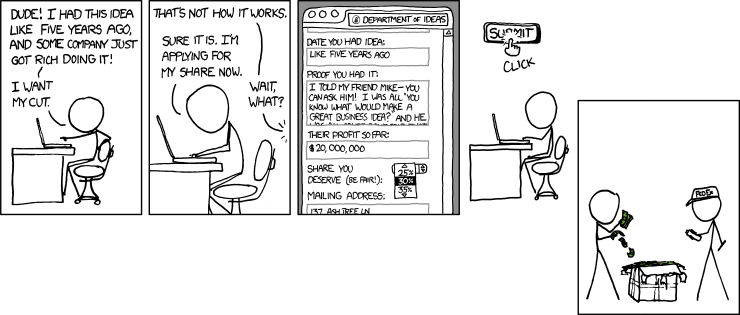
There are certain things that tourists do to tip their hand, and reveal that their motivations are more complicated than a simple passion to be great at something nobody else can or has done before.
So, here’s my (totally unscientific), list of signs of Startup Tourism. In no particular order:
-
Knows the Lingo… a little too well
Startup Founders learn about seed funds, VCs, valuation, down rounds, convertible notes, equity dilution, and the rest of it as they go along. They have to. These are things you have to become familiar with if you want to succeed as a high growth startup, but it isn’t necessarily something you need to know much about before you actually start. At the beginning, an idea and a team that cares a lot about that idea can get a startup pretty far with minimal wisdom about the intricacies of fundraising and corporate structure.
Moreover, a team that isn’t focused on these “status metrics” is more likely to be focused on what’s really important- which is building enormous value for their customers.
Tourists tend to know the startup lingo a little too well for their own good. This can reveal a focus on the trappings of success, rather than the work involved in achieving it. That’s not always true, but sometimes it is. Good startup founders can always become good at this stuff because they have to. It’s a means to an end.
A Tourist is more likely to ask a lot of intricate questions about funding and corporate structure, but to do so well ahead of the time when knowing these things is particularly relevant. The tourist is fixated on valuation, instead of value. On “benchmarks” instead of forward progress. So focused on appearing to be in control, a Tourist reveals that they are not focused on doing what their startup actually promises to do.
-
Asks “How?” Instead of “Why?”
Mentoring startups often involves throwing a lot of things against the wall, and seeing what sticks. It’s the startup founder’s job to talk to mentors, and to then try and process what they’ve heard, and find out what’s really relevant for them. That means listening to people you might not completely agree with, and then checking what you’ve heard with others, to see what they have to say. It also means listening to people you agree with, and then digging into your own reasons for agreeing with them. It’s about jumping into a swamp of conflicting opinions, and trying to make sense of it all. It’s messy work. It’s frustrating, and it needs to be.
Mentorship is more valuable when the startup founders are asking searching questions. “Why do you think we should do this? Where can I learn more about that? Who should I ask about this?” These questions produce more work for the founders, who have to follow up on what they’ve heard.
When a founder more often asks: “how can I do that?” or “How would you do this?” These are not searching questions, but rather invitations to do the founder’s work for them. They don’t open up new avenues of thinking, and are not so open-ended. It’s like the student in university who asks the professor how many pages the term paper has to be. That’s not information that helps the student perform better and be creative, rather it’s information that helps the student do what is expected. It helps you get a grade, but it will not help you actually learn anything.
A favorite professor of mine once answered by saying: “as many as is necessary.” I took that to mean that the professor would know very well whether the actual ideas a paper contained were worth the number of pages actually consumed.
Searching my memory, I cannot recall a single instance in which a founder who has gone on from StartupYard to successfully raise seed financing and build a growing business asked me how to do anything. But I can recall many instances in which those same founders asked me why they should do one thing, or another. And many more instances when they asked for my feedback on something concrete. Opinions and feedback are generative. Building on ideas and being creative are what matter. There are no gold stars, and no grades in real life.
Figuring out how to do something can be easier than figuring out whether or not you should actually do it. Founders who ask why, are much more likely to get useful answers than the ones who ask how.
-
Talks about Opportunities Instead of Challenges
A few weeks ago, I heard a very funny story about one of our investors. He was a jury member at a startup competition, which is something startup investors end up doing a fair bit. A startup had stated something like: “the market is worth an estimated $100Bn, we aim to capture 5% of that, and if we do, we will be worth over 5Bn in recurring revenues.”
That’s a pretty prototypical tourist point of view. The investor in question had his own brilliant response: “why 5%? Why not 8%? Why not 15%” The implication should be clear enough- the size of the market can be impressive as hell, but the actual dirty work of building a business is not as sexy as talking about money. If you’re focused on getting a slice of the pie, then you’re probably not thinking about building a whole new market. You’re probably not interested in changing the way things work, but rather making the way things work, work for you.
And if the thing that matters most is the market opportunity, then what are you really passionate about? If you’re smart and you work hard, you can make money at a lot of things. You don’t have to found a startup to do that.
The founder that is fixated on market opportunity is less likely to be laser focused on creating value for the people who will actually pay for whatever they provide. That focus on creating inimitable value is everything to a successful and disruptive startup. It’s not about trying to grab a piece of an existing market, but about creating a new market nobody else is aware of yet.
Much more interesting are challenges. What does the market not yet provide, and why is that badly needed? Why couldn’t the market provide it before now? What problem is just waiting to be solved? Disruptive startups tackle the status quo, and change the way people and businesses and the world around them works on a more basic level. They make things that are not just faster and cheaper and prettier, but actually different.
I see this problem as one in which the startup founder is too focused on what they think investors want to hear. They will say their market is growing, and hope that the mere implication of opportunity is justification enough to get funding for themselves, regardless of what they’re actually doing.
When making a case for itself, a startup can be much better served by talking about what hasn’t been possible before, than about what has already been accomplished by others, or things that would happen whether the startup existed or not. Yes, for example, the mobile gaming market may grow by 40% in the next two years, but that’s an argument in favor of investing in that market, not necessarily for entering that market with a specific product. The product itself needs to make sense, and the fact that it’s an expanding market is, perhaps, a bonus.
Yet I hear this justification thrown out at virtually every pitching event I attend, over and over again. “The market is huge, and we’ll be a part of that huge market.” Yes, and?
- Puts Their Fate in the Hands of Others
It can be as simple as this- a Tourist is a startup founder who is waiting for something. Waiting to get into an accelerator. Waiting to attract a VC. Waiting to quit their job. Waiting to be noticed. Waiting for the magic bullet.
This is part of what makes selecting startups so hard for an accelerator. We want people who are ready, but not people who are waiting. We ask startups when we first interview them: “What will you do if you aren’t accepted here?” The Tourist will answer: “I’ll try again,” or “I’ll apply to another accelerator,” or, “I’ll stay at my job for now.”
A startup founder who is passionate about what their doing, and really believes in it, is more likely to say: “I’ll just keep going,” or “I’ll think about why I didn’t make it, and decide what to do next.” The genuine founder is already thinking ahead of the next failure, looking for the next challenge, and not waiting for success to strike them.
Meet Soldigo: An SY 2015 Alum with a New Brand
/in Interviews, Life at an Accelerator, Starting a Business, Startups, StartupYard News/by StartupYardThis week, on our trip to Romania, I caught up with one of our favorite StartupYard Alumni, Mathe Zsolt-Lazlo, known to us as Zsolt, founder and CEO of StartupYard alum Soldigo– formerly known as Shoptsie.
Soldigo has changed their name, but they’re still the amazing team they were when they joined us at StartupYard. I talked with Zsolt about what’s been going on at Soldigo since they left StartupYard last year:
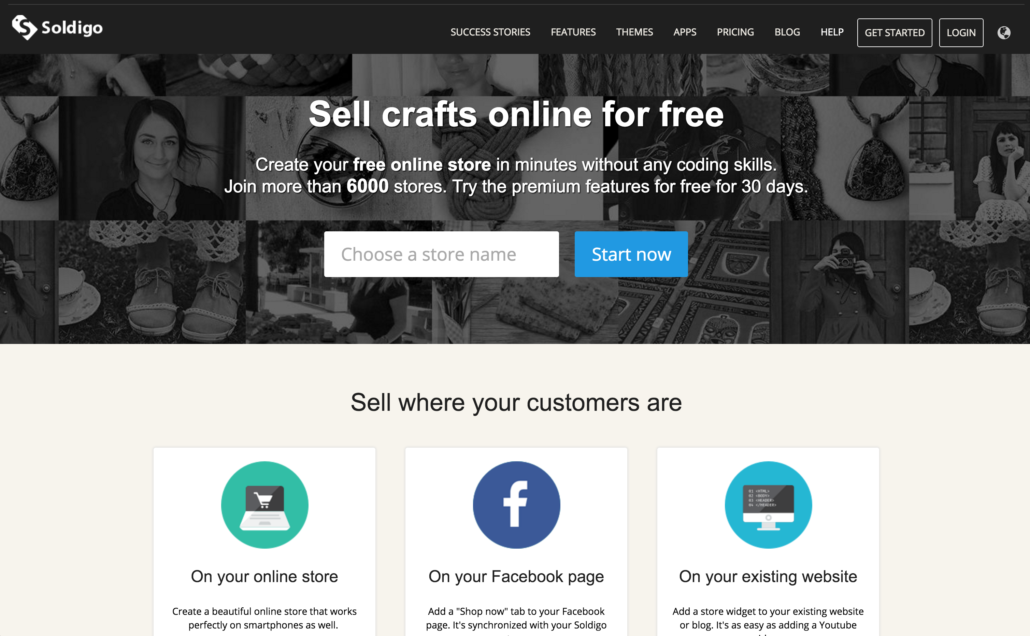
Hi Zsolt, first let’s address the big question: your company has a new name: Soldigo. How did you pick the name, and why did you decide to rebrand?
Hi Lloyd. Indeed, we went through a rebranding so Shoptsie is now Soldigo. We got so many contradictory suggestions, many people told us we should change it and just as many said they loved the old name, but in the end we decided to change it after all.
As a result of many long brainstorming sessions we came up with nearly 100 new names. We did some research and because there is a lack in terms of .com domain name availability, we gradually reduced this number and arrived at Soldigo. We chose this name because it is short and sweet, in tune with the trend and somewhat catchy. Soldigo stands for “go with the e-selling flow”. It is intelligible in multiple languages and evokes optimism and fun.
What have been some of your biggest milestones since leaving StartupYard?
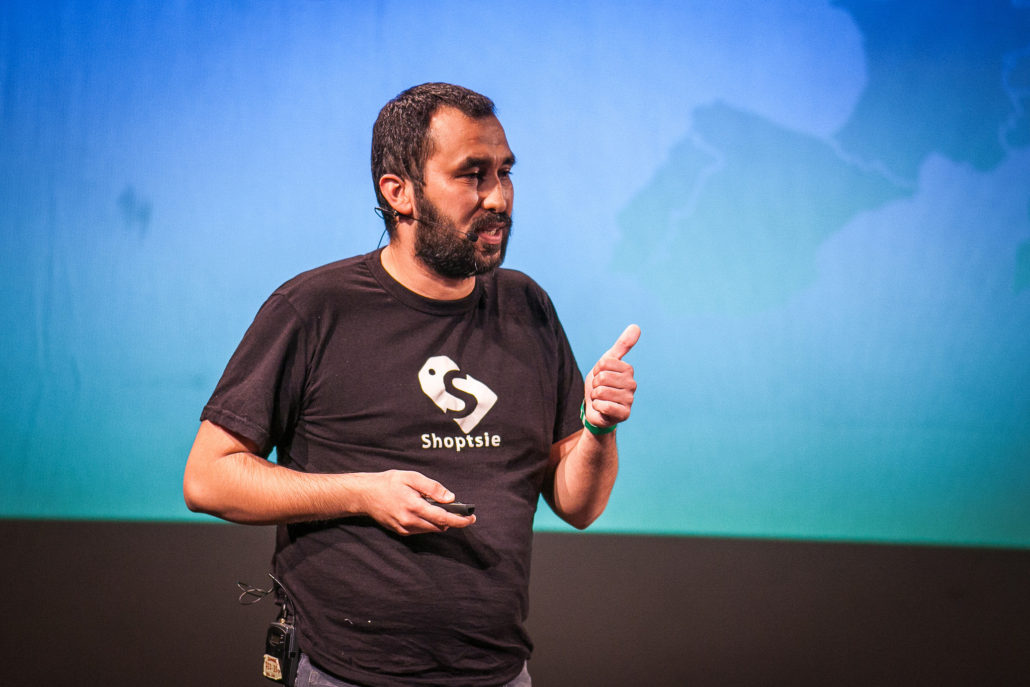
Zsolt pitching Soldigo at StartupYard’s 2015 Demo Day
I believe our biggest milestones since leaving StartupYard were finding the right teammates and creating the new version of Soldigo. In our industry, technology and business development are often inseparable from one another and this is why we decided to change the platform to an improved version of itself. The new version of Soldigo is more intuitive, easy to use and fully supports the needs of small and medium businesses.
What about your biggest challenges?
Our biggest challenge and joy is to meet the needs of our existing and potential customers who are just as eager to perfect their online stores as we are to improve our service that allows them to do just that. We plan on introducing social selling and create a new plan called Marketing that will offer great marketing solutions for optimized selling.
Tell us what’s new in Soldigo. What are some of your newest features, and what have been some of the biggest changes to the product?
To meet all of our customers’ needs and requests, we added the following amazing new features and updates:
– we improved the product upload as well as the image upload features
– we enabled the possibility to add subcategories
– connecting the store with blogs is also possible now
– we re-thought the Designer and therefore the store owner will have more freedom with it, more customization options (possibility to add background images, more control over coloring the store, possibility to change font types and sizes, so an overall bigger freedom to be creative when it comes to the store’s look and feel)
– new server makes it all work faster and better
You’ve recently expanded your team. Tell us a bit about that process, and about the current state of the team.
The process of recruiting new team members was quite long since we had to make sure that the person joining us represented the same values and had the same goals and was enthusiastic enough to step out of the “8-hours-of-work-a-day” frame of mind.
We created a friendly work environment that is not about long hours but rather about focusing on work when needed and make it efficient. So we looked for people who fit into Soldigo’s team spirit and drive. While developing the new version of Soldigo, we expanded the team with a senior developer and a sysadmin. At the moment the Soldigo team is made up of 5 people.
Looking back, what has been one of the most important lessons for you and the Soldigo team coming out of StartupYard?
The most important lesson after coming out of StartupYard was to “get out of the building”, to engage with our customers and to allow their needs to shape the direction of Soldigo. We are constantly attending as many handcrafters’ fairs and exhibitions as possible and we aim at maintaining a constant contact with our existing customers.
You’re currently focusing on growing your userbase. What are some of the main challenges in doing that, and where do you hope to be in the next year or two?
That is correct. Since we finished the development of the new version of Soldigo, we are focusing on growing our user base. The main challenge of doing this our lack of experience in the marketing field.
Over 6000 customers are using Soldigo currently, of which 12% are generating an average 20-25 sales per day. To grow the number of our customers, we created a marketing strategy, both online and offline, but since we are not experts, we saw that we need help in this area. At the moment we are working with two really good marketing agencies and we got a lot of help from the StartupYard mentors.
The next two years are crucial for us. We want to put Soldigo on the map of the e-commerce world with hopes of it becoming one of the best solutions in helping small and medium size companies to succeed with their online businesses.
How have your ambitions for the company changed since you left StartupYard? Have you revised your vision in a significant way
When we arrived at StartupYard we wanted to reinvent the wheel and we felt that Soldigo was meant for everyone. We were really clueless in how to channel our ambition to get results.
What we learned there is that targeting everyone at the same time is really impossible, and so we chose a niche that would focus our energy in a more targeted way. Our vision became clearer and Soldigo became more consistent, in brand image as well as brand strategy.
We have an open call for Startups closing on September 30th. What would you say to a startup that’s thinking about applying to StartupYard?
I would say that applying to StartupYard was hands down one of the best things we did as Soldigo. It has taught us everything we know today and, most importantly, that you can achieve many things if you have a good team.
It gave us an immense perspective on where we were and also gave us a direction for the future. It was an amazing learning experience that truly defines us to this day and we felt really honored to be mentored by such incredible mentors.
I believe that StartupYard is an amazing platform for startups to grow and to learn and to find their true calling, so startups, do yourselves a favour and apply, asap!
How to Overcome The Fear of Charging Users
/in Life at an Accelerator, Starting a Business/by StartupYardOndrej Krajicek of Y Soft Ventures: Celebrate Results
/in Starting a Business, StartupYard News/by StartupYardOndrej Krajicek is CTO of leading printing hardware/software development company Y Soft, and a prolific mentor and presence on this blog. Earlier this year, we featured Ondrej’s interview on education and entrepreneurship in two parts.
You can read them here: Make Failing Legal in the Czech Republic, and Density Doesn’t Equal Cooperation.
“We Need to Celebrate Results”
I caught up with Ondrej one more time recently to talk about his takeaways from StartupYard’s most recent cohort of startups, many of which have been in the news recently. Here’s what he had to say about that, and about what Y Soft is doing in the area of innovation and startups:
Hi Ondrej, you’ve just met with another cohort of StartupYard companies. Did anything surprise you?
Neuron Soundware and NeuronAD pop into my mind first. Generally I have been positively surprised by overall quality and diversity of all startups in this cohort. Yet again, each team had something unique and intriguing. I had quite interesting discussions with the guys from Boatify and I check their progress every now and then. Quite a niche market, but interesting app. I also enjoyed meeting other StartupYard mentors, Node5 tenants and it was also nice to meet some people from the previous cohort.
What do you see as some of the biggest challenges facing this latest group?
Productization and monetization. It is one thing to have a technology, a prototype product or proof of concept, and another thing to turn it into a product. I am an engineer, and I used to look at productization (the activity which turns software artifacts into software products) from a purely technical perspective. Yet this is mainly about the non-technical things. Do we have everything we need to support our salesforce? Can we support the product and help end users to work with it? Do we have a clear value proposition?
We still do not do productization right at Y Soft and when we feel we have it all, we discover a few more things we need to do for our partners to be comfortable selling our solution. Most startups have the comfort of selling to the end customers directly, which in one way is easier because you only have one line of customers.
Indirect business is about taking care of your entire sales channel and to deliver value to all of its parts. However, this is what we believe in and it also enables us to do more ethical business. We do not compete with our customers for one as some of our competitors do. Anyway, if you are struggling with productization, take a deep breath and work on refining your value proposition. Why should they buy?
One simple advice: you have a good value proposition if it’s short and can be translated into money saved or more money earned by your customer.
There were some teams who were struggling with engineering as well, and I believe that this is an indication of how difficult it is to get good engineers these days. I feel a bit embarrassed as a Czech to welcome a passionate team from abroad and tell them that they most probably won’t find skilled engineers here.
You mentioned to us that Y-Soft is expanding its cooperation with startups and investments. Can you talk about what the company is doing in this area, and what its goals are?
Y Soft Ventures is focusing on startups combining hardware and software. Internet of Things and Industry 4.0 if you will, but I am not known for liking buzzwords. Anyhow, we have just finished investments into Lumitrix and GreyCortex, both exciting additions to our portfolio. My colleagues also would not forgive me if I did not mention that they are still looking for investors into our first fund, so feel free to get in touch and invest ;-).
In general, we are focusing on companies where we have added value with our know-how and services as Y Soft. Y Soft Ventures is a gateway of sorts, providing funding and access to Y Soft resources, be it our corporate network, R&D, product design, manufacturing or finance. Good thing is that all the people you can engage with are still doing it and are not “consultants.” Our engagement towards startups is quite serious as we are now considering where to grow, having 6 companies in portfolio (I know, we are a small fund) and we are already concerned about our capacity to sufficiently engage with all of them.
How does Y-Soft position itself among other large Central European and Czech investors?
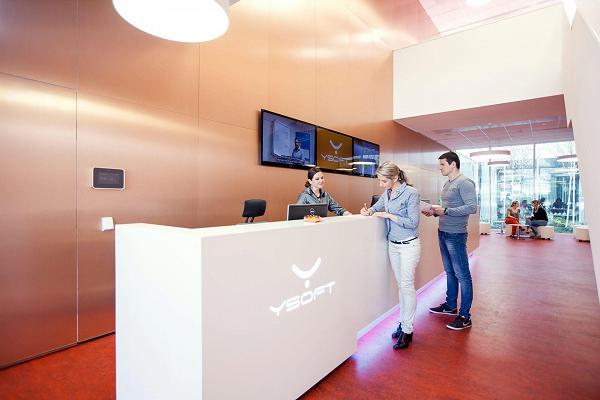
Y Soft is located in Brno, the second largest city in the Czech Republic
Early stage investments, product development, hardware and software with global potential, great teachable team, no bullshit and focused on results.
As this is the typical cliche, let me elaborate on what “results” means. I have been thinking about the Czech startup scene and our portfolio (albeit quite small) and I believe that we – as in we as a startup ecosystem – need to change our direction. Startup community is growing in Europe and especially UK (which might be leaving or not leaving EU) and we are progressing on the road to replicate Silicon Valley success. I strongly believe that we should stop replicating the valley and start building a mountain (or whatever). Because we are not doing it right and to a large extent, unless we are able to change our DNA and culture to the one they have, we will never make it right.
Take the famous fail fetish for instance. Chris Burry, one of the mentors at CET UCB told me: if you do not have enough customers willing to pay you for solving their problem, you don’t have a company, you have a hobby well paid by investors.
In other words. In Europe, we give awards, organize showcases, get togethers and do hackathons, we celebrate entrepreneurship, but we do not really celebrate results. And I would like to point out, that results are sold products, services delivered and money earned. Or another way how to put it as my colleague, Milos Sochor says: investment is not revenues. Sadly, there are so many startups who do not realize the difference.
We need to stop celebrating failure, and start celebrating success. @ondrejkrajicek Share on X
If you want to replicate something from the valley, let it be this. 3 out of 4 startups fail, most of them during their first year of existence. If you dare to get a desk at a incubator, you have to deliver every single month, sometimes every single week. If it’s not revenues, than it is users, subscribers or connected devices. Quantified metrics which can be straightforwardly translated into revenues. If you fail, no hard feelings, you can try again. But do not stall, there are five people waiting in the queue for your desk.
And no, investors do not love previous failures. Investors like success, like anybody else and if you say otherwise, you are not fit for a startup. Failure is only good if it’s fast and leads to improvement. The challenge is that acknowledging failure is the hard part, but living the improvement is even harder. To me, Embracing Failure is about Lean Quality Management and the Deming wheel says Plan-Do-Check-Act, not Plan-Do-Like-Boast! That is another reason, why we are focusing on smart money – which is in general another buzzword, but for us, it means that we focus on delivering services to startups, connecting them with YSofters, not (just) money to spend.
So please, let us stop celebrating red numbers, losses, zeroed balance sheets and failed deals while repeating the how-cool-is-to-fail-again mantra. Let’s celebrate customers, revenues, break even events and self-sustained growth, to set the right example. And I cannot wait to see Pioneer Awards for making company self-sustained and profitable, not for making fuzz in media.
And by the way, it is not just me saying this. Many Entrepreneurs yet have to realize that it is very different to spend hard earned money and to burn investments.
I agree strongly with this sentiment. I was in Berlin recently, where there are over 200 coworking spaces and incubators, and seemingly anyone can subsist for a long time this way with no results. Do you think incubators are doing more harm than good at this point? How would you flip the model to focus on progress and success?
From my experience with incubators, I would refrain from generalizing. However, I believe that it is about motives and business models. Is the business model of an incubator to generate revenue on rent and services? If that is the case, then the incubator has no motivation to push for growth and economic success, they are happy to be full, regardless of who is there. Or let me use this – probably stupid – parallel: I have been in an incubator as a newborn kid myself, but for two weeks, not for 12 years.
The part of the solution as it works in Sillicon Valley is the demand. The demand there is so high, that most incubators or coworking space can securely make a living and be strict on their tenants at the same time. This probably would not work here in Europe as in many cases, the critical mass of starting companies is simply not there.
What happens when incubators would generate revenues on exits, i.e. participate as shareholders on successful companies even after these companies outgrow the incubator? This sounds like a dream of course, but with significant cash flow issues – the incubator is often not an investor and needs to generate short term revenue.
Is an incubator a viable commercial concept on its own? Or is it better a better fit for mixed sources of funding, such as having large companies as investors, as a result of joint effort of universities and corporations or as part of being a venture capital or private equity fund itself. Cash is king and unless the source of cash are successful startups generating profit, this will never change.
So long story short, incubators should become accelerators of failure and seek independence from rent/service revenues generated on startups. Seek (co-)investments, partnerships or other sources of short term revenues.
Y Soft has been working on some interesting new products in 3d printing. Can you talk a bit about that?
We have integrated the be3D team (welcome on board guys!) and recently launched our flagship (literally). A 2 meters high FDM printer for industrial prototyping called DeeRed 2. I love the beast, customers, such as automotive companies, use it for parts prototyping and design studies. It has also quite a few innovative things inside and we have patented some of them.
Patents are still quite a controversial issue for us and as the field of 3D printing is heavily patented, we have no other choice than join the club and patent our inventions as well. As well as many companies, for us our portfolio of patents is mainly a defense mechanism against trolls. We do not expect to chase our competitors, unless we face pure plagiarism. I am not particularly happy to work with patents, but it is necessary.
My recommendation to some of the startups, like NeuronAD in StartupYard was – if you believe in your genuine idea, you should patent it soon. Patents are assets and if you manage to have it granted, this will increase your value in the eyes of investors, because it may be a proof point of what you have. Not that all patents make sense, you still need to read through :-).
However, I still need to say that I strongly believe that in the fields with such a short innovation loop as IT, patents are hindering innovation.
Back to the 3D printing though. We strongly believe that 3D printing is not about devices, but about vertical integrations. And it is starting to show up in the market of entry level printers. Everybody likes them, but not everybody buys them. That is why we have created eDee, a 3D printer for education connected to SafeQ, our enterprise office workflows platform. And we will continue in this direction even further, but it is too soon to disclose more.
You’re very focused on education, and specifically changing the education system in the CZ. What have you (Y-Soft or you personally) been doing lately to that end?
It has been my personal mission to change how IT is taught here in the Czech Republic. However everything is evolving and so did my mission as well. Let me say that I strongly believe in the potential of the Czech Republic to become an economy based on high added value, not low staff costs as it is perceived now. If you have software companies coming here because for each headcount fired in the US they can get three open here and still save, you know that it is not sustainable. And yet, that’s what we are still encouraging as a country.
So I would reformulate my personal mission to support and perhaps drive refocusing on added value in the IT sector here in the Czech Republic. Good thing is that this mission is highly aligned with what Y Soft needs and does. Education is still a huge part of it, but a wise man asked me one day, to what end do you want to improve it?
We have two great assets here in the Czech Republic which we need to learn how to utilize to improve. The first one is our education and academia, the second one is basic research. We have fields with great traditions, be it engineering, chemistry, physics, mathematics or computer science. I strongly believe that time has come to formalize the role of companies in the education system and take them seriously. It can no longer be managed by schools and the Ministry of Education themselves, because they miss one crucial thing: the customer. How would you run a company without talking to your customers?
However, companies need to respect the culture and principles of education and academia. And if they do, they might get a chance to influence the curriculum, participate in teaching of the practical courses and make sure that the students are much better prepared for what they need them to do. Universities still do not accept the fact, that they cannot understand what the industry needs and why and they should start to listen to their customers.
The role of the government is crucial in this. First of all, they need to establish conditions encouraging this dialog by changing the education system funding to focus on quality and return of investment. This country cannot grow its GDP by having more librarians or painters. Not that these should not exist, but we all need to make sure that we have enough engineers, designers, chemists and mechanicians. And this is not about universities only, the same applies for secondary and vocational schools as well. The government needs to talk to the parents to explain where the future is and what fields have the biggest potential to grow and prosper.
What I am doing in this sense is that as a representative of Y Soft, I have finished my first year as a chairman of the IT Committee of American Chamber of Commerce in the Czech Republic [StartupYard is also a member]. My first goal here is to create a platform of like minded companies to create a platform to talk to universities and the government. AmCham is well suited for this as it is as an organization not involved in our Czech politics. It is above and beyond, focused on bringing best practices from the US to support business here. I managed to put together a good team of different IT companies and formulated a short strategy for the next two years, but it is too soon to see specific results.
I see the problem existing in two horizons, +5 and +15. The +5 horizon is about focusing on Universities to deliver change in five years. My objective is to improve the quality of the average graduates. We only have so many the best ones and we need much more. We need to make sure that the average candidate on the market is well prepared with moderate growth potential. Today, I often meet fresh graduates who do not know what is the worst case time complexity of quicksort and that is scary. For the record, it is O(nˆ2) and depends on the choice of pivot in relation with the input sequence.
The second +15 horizon is about opening the Czech education system to foreigners, focusing on basic and secondary education and helping parents and children to decide where to invest their lifetime. There is much more and I am still processing it. So maybe next time…
You told us that Y Soft continues to run its manufacturing operations in The Czech Republic. Why is that so important to the company?
Yes and we will plan on expanding our manufacturing operation here. The most important factor is flexibility. Having the manufacturing under our roof and close enables us to adapt and provide our services for prototyping and small-volume manufacturing to other companies. We provide our manufacturing capacity to our startups and at least one of them is already using it, with more to follow. On top of that, we have really learned our lesson how important is to keep R&D, product design and manufacturing teams close and talking. Otherwise, quality plummets and CoGS skyrockets ;-).
Quality, availability of skilled workers and short manufacturing cycles are also important reasons why we are doing so. Four years ago, we have faced the difficult decision whether to move to the cloud and stop doing hardware or whether to bet on it and expand in this direction. We have decided to stay focused on HW as well and then the Internet of Things hype came, so it was not a bad decision.








